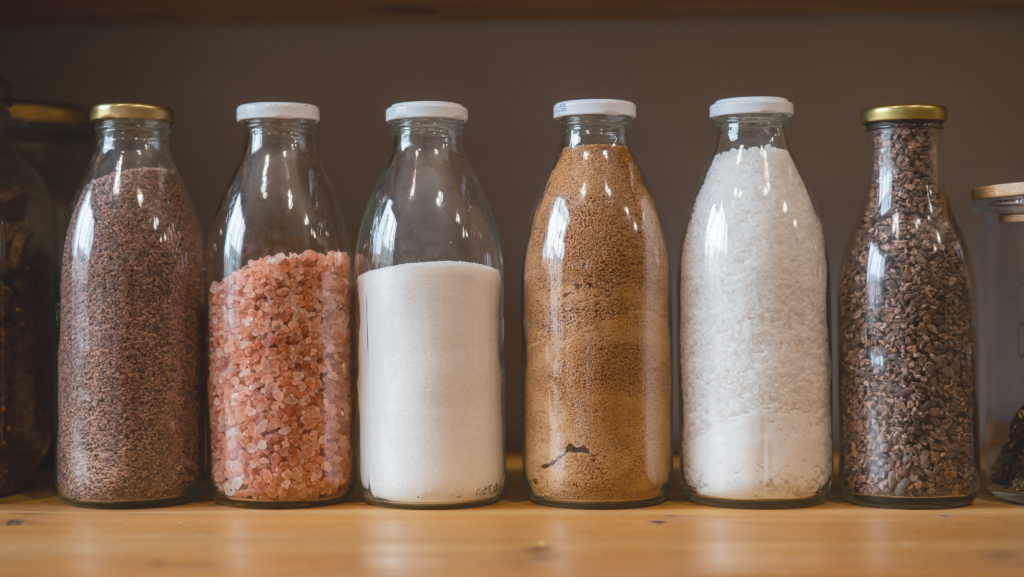We hear the words refill and reuse a lot and often use them interchangeably. But did you know that they are not the same thing? In this blog, we’ll show you what the differences are – and why they are important as we move towards a zero waste world.
Imagine this: you’ve drained the last drop of your washing-up liquid. So you rinse out the bottle, cleaning all the gunk that’s built up around the lid. Later, you pack the bottle in your bag, trek to a refill shop (that’s not near your usual supermarket), fill it up, get it weighed, and take it home.
This system – familiar to thousands of dedicated zero wasters around the world – is a great way to reduce packaging waste, but it puts the responsibility for doing it squarely on our shoulders.
Refill systems are based on the customer providing their own packaging. They are easy to set up and don’t need a lot of investment but they rely on individuals being motivated, organised and often wealthy enough to get their products in this way.
In some contexts, for example in rural villages or in a network of public water fountains, refill works really well. In others, there are significant downsides:
- Impracticality: to do a full weekly grocery shop, as is common in the Global North, planning ahead to take your own containers for everything would be challenging. Even on a day-to-day basis, remembering to carry reusable bottles, cups, cutlery and bags takes effort. It’s easy to see that most people with busy lives would not be able to do it.
- Legal concerns: issues surrounding hygiene and food safety can make supermarkets, restaurants and other companies wary of “bring your own container” schemes, as they would be liable for any problems with the products purchased, even if not at fault.
So what about reuse?
Picture this: you finish that same washing-up liquid and toss the bottle in a bag of empties. On your next supermarket run, you simply drop them off and buy a new, pre-filled bottle from the shelf!
With a reuse system, the packaging is owned by the producer or a third party who has responsibility for collecting, cleaning and refilling it for the next round. It’s highly scalable and addresses all the issues raised with refill:
- It’s easy and convenient: no extra trips, no meticulous weighing, just buy what you want and drop off or hand over the empties later. Companies create the whole infrastructure, making it easier for everyone to participate.
- It gives companies control: as the reusable packaging can be produced in specific sizes and cleaned to specific standards, it removes the legal issues that come with refill.
- It boosts the economy: collecting, sorting and cleaning reusable containers will create new jobs for people in the waste management sector and ensure a just transition.

So why is this difference between reuse and refill important to keep in mind?
As supermarkets start to take steps to address plastic pollution, they often do pilot schemes to reduce single-use packaging, which are refill-based – as these cost less money to implement. And often, these schemes fail – due to the reasons we explored above (lack of individual motivation, planning fatigue etc.).
These supermarkets then use these failures to say “refill and reuse doesn’t work” and go back to business as usual. They say “customers don’t want it”. And it’s true: when the weight of responsibility lands on people who are already juggling a million things (and probably running on empty coffee cups), it’s no surprise refill systems are not popular.
But to dismiss reuse systems at the same time is at best a failure of imagination – or at worst, cynical greenwashing.
A safe, well-designed reuse system can fit seamlessly into our lives and be implemented on a much larger scale than refill. But it requires investment and infrastructure. Companies should not use the limitations of one system to justify avoiding the transformative potential of the other.
If you are aware of the difference, you can use it to spot these kinds of tactics and also to help people around you to see that zero waste does not need to be hard, if companies are prepared to support our actions.
Share your thoughts! Is this article useful for you? Have you seen any examples of refill or reuse systems in your area? Why do you think they work (or don’t work)?


Join the conversation